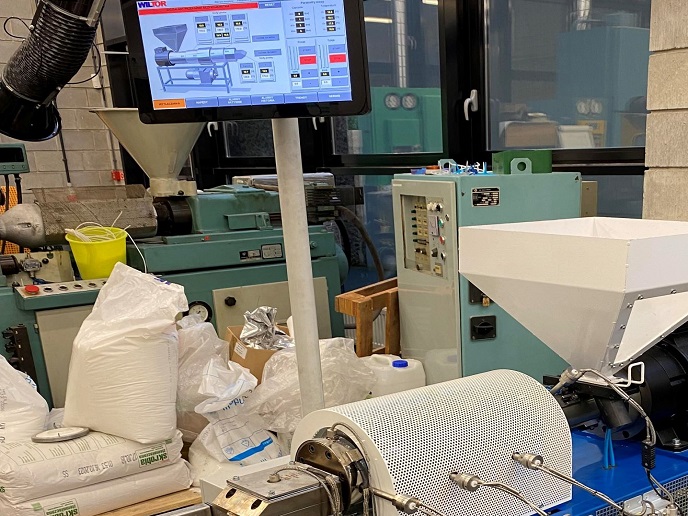Improved machines for composite material manufacturing
Extrusion is a manufacturing moulding process that involves forcing a base material through a pre-shaped die to create objects with a specific shape and profile. Products of extrusion are called extrudates and can be pipes, sheets, furniture and window profiles, fuel tanks, barrels, containers or even food snacks. The EU-funded NEWEX(opens in new window) project demonstrated a unique technology that allows small- and medium-sized enterprises (SMEs) to process polymers and composite materials more easily. Featuring single-screw extruders(opens in new window), the new machines simplify the processing of materials with a very low flow rate index and low viscosity as well as of those containing high amounts of nanofillers.
Insight into the inner workings of the machine
Operation of the innovative extruder relies on the development of advanced component concepts: an innovative grooved feed section, a rotating barrel segment and screws with special geometry. “The fundamental concept underlying the development of the new extruders was to improve the plasticisation process of difficult-to-process materials (how far they can bend without breaking),” explains project coordinator Janusz Sikora. The parts of the plasticising system are adapted depending on the granulometric (grain size) and rheological properties of the material being processed. In a first, the extruder enables users to continuously change the structural elements of the grooved feed section by independently changing the depth of each groove and the number of grooves. The barrel rotates in either the direction of the screw rotation or the opposite one, at the desired speed. The extruder screw was modified to conform to the modified barrel. Researchers filed patents for the three solutions to protect their intellectual property. “We expect that our adapted process will be more efficient than conventional extrusion, allowing the extrusion of greater amounts of material in a shorter time, better product homogenisation, reduced energy consumption and reduced waste. This is good news for certain sectors such as polymer manufacturing, cosmetics and food,” remarks Sikora.
Experimental work
Researchers experimented with extruding low-density polyethylene – soft, flexible, lightweight plastic material – containing a certain amount of nanofillers (halloysite nanotubes), determining a number of parameters. These included the pressure and temperature distribution in the plasticising system and extrusion head, specific energy consumption, die swelling, extrudate temperature, extrusion speed, and the power supplied to the extruder and transferred by the polymer at low and high screw speed. The properties of the resulting extrudate were then investigated by determining factors such as the melt flow rate, heat deflection temperature(opens in new window), phase transition temperature, degree of crystallinity, enthalpy, Young’s modulus(opens in new window), tensile strength, breaking stress, impact strength, hardness and others. Researchers then carried out comparative tests. In parallel with the research and development activities, NEWEX supported international, industry-academia exchanges and knowledge transfer between selected research institutes and companies from across Europe. “Our project goals are coherent with EU policies that have put significant emphasis on supporting the development of environmentally friendly manufacturing technologies to help reduce energy use. The use of our machines will boost SME competitiveness, turnover and employment rate,” adds Sikora. The project consortium intends to continue working on their newly developed technology, raising the technological readiness level to level 9.







